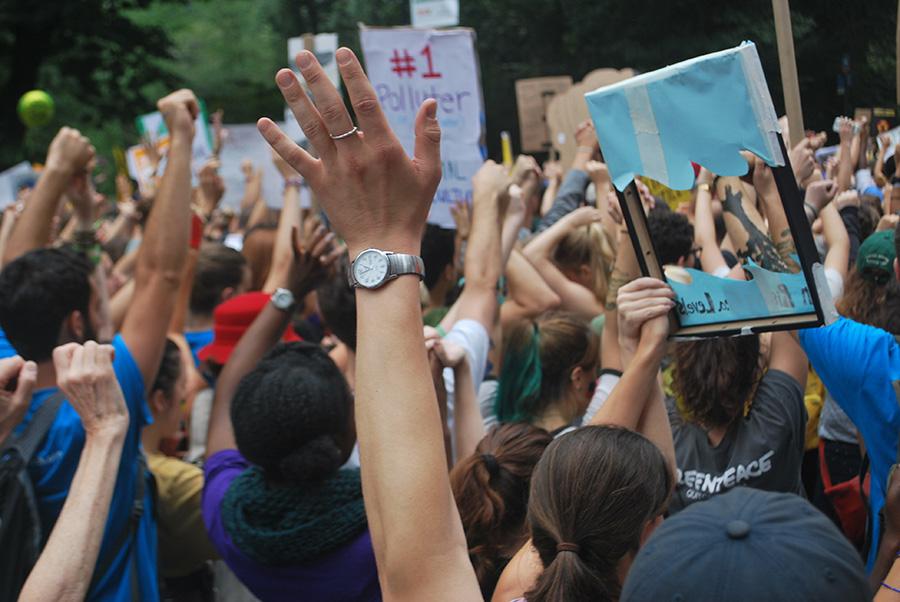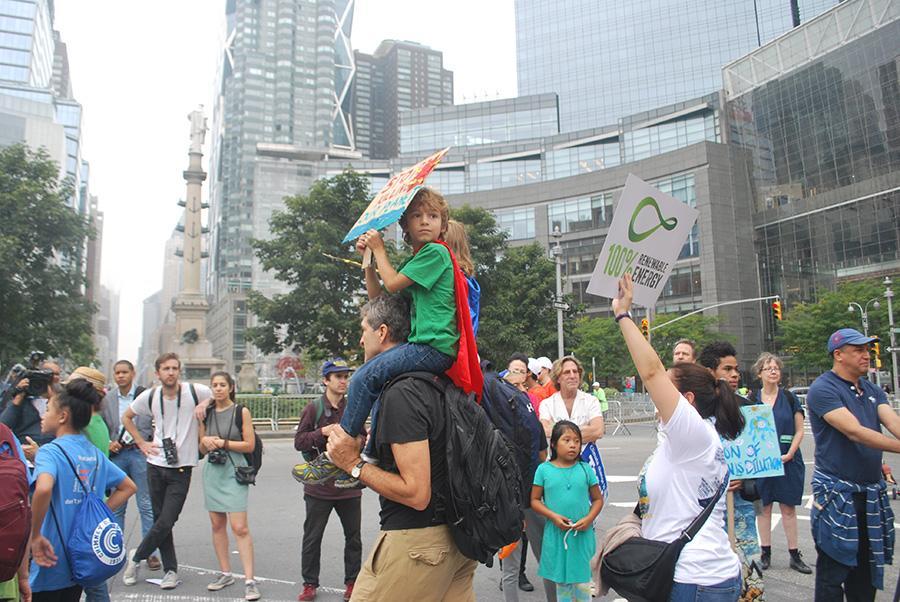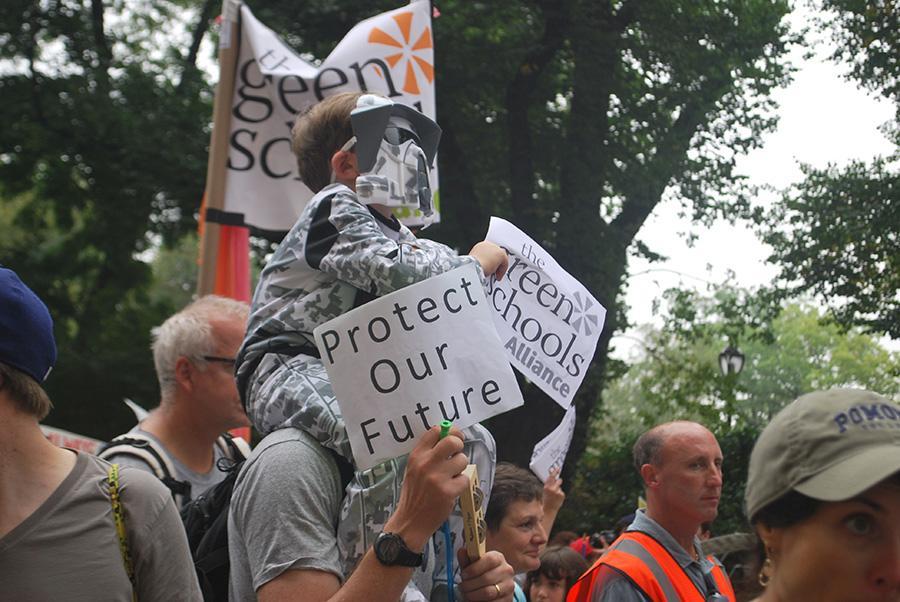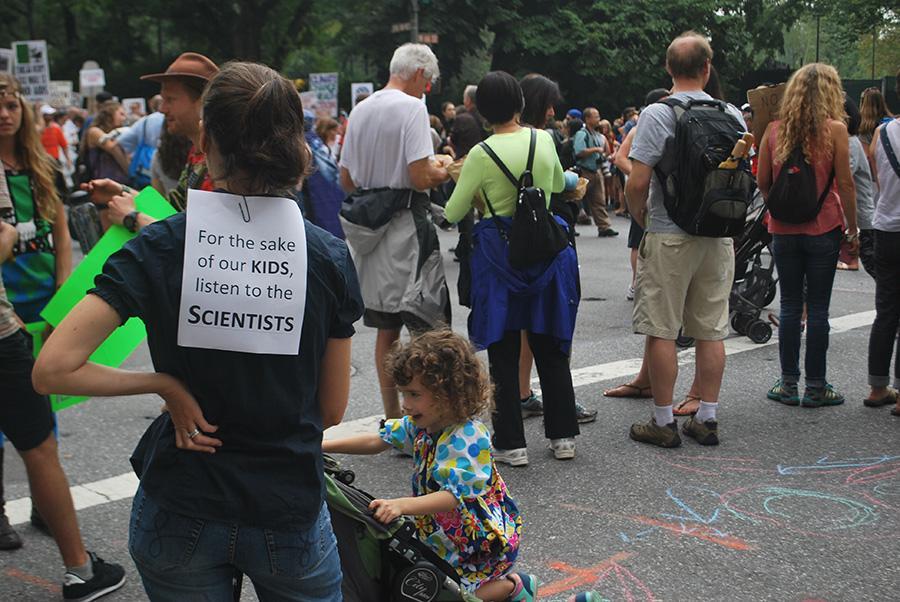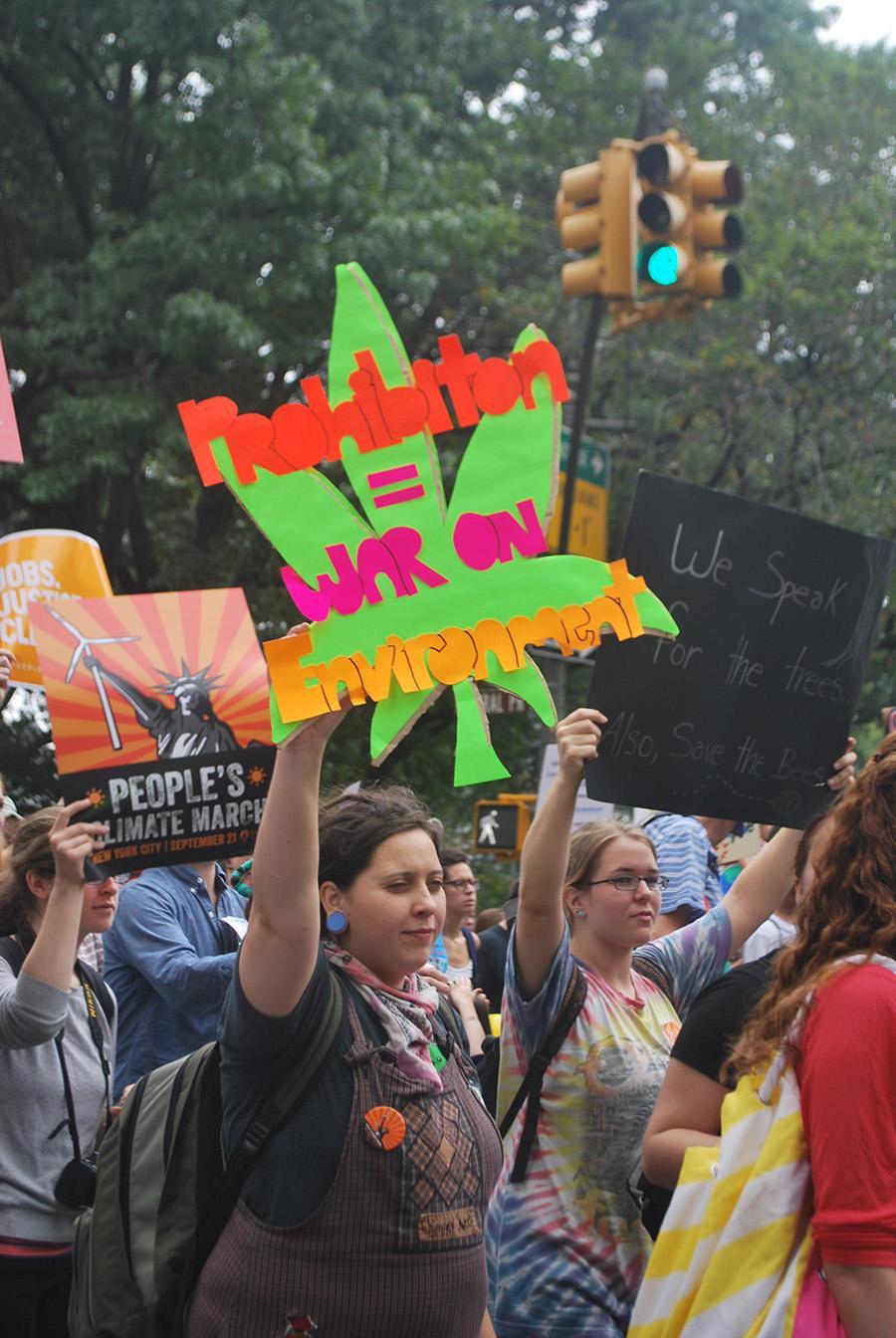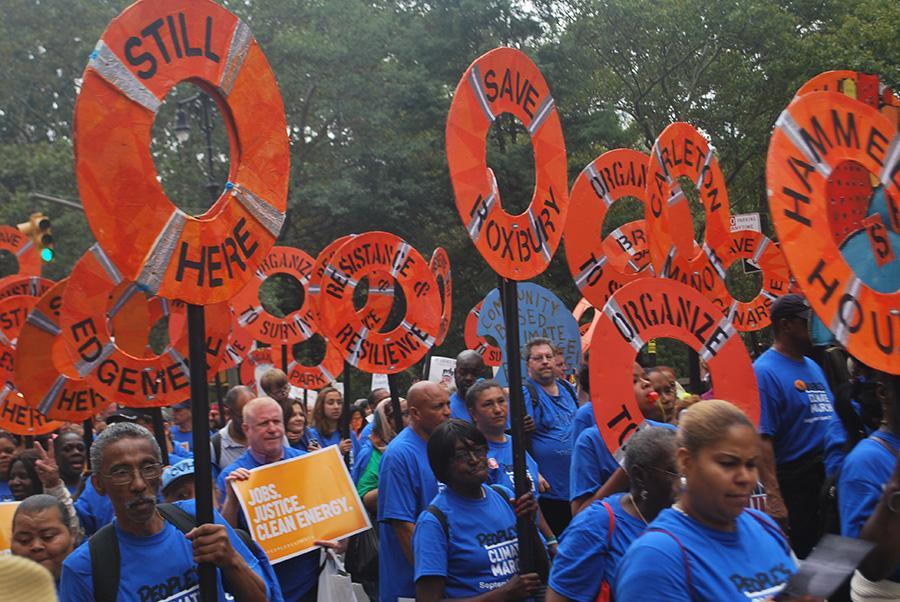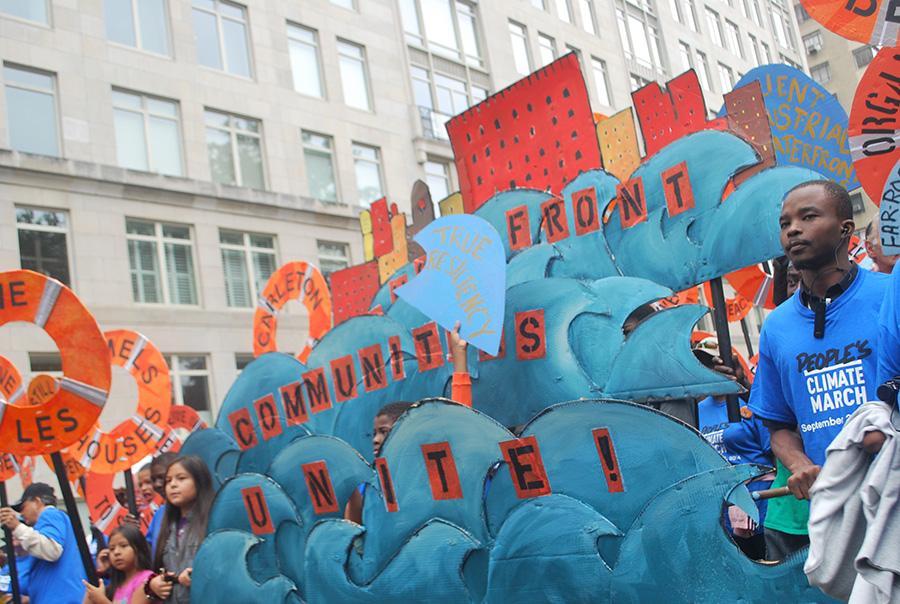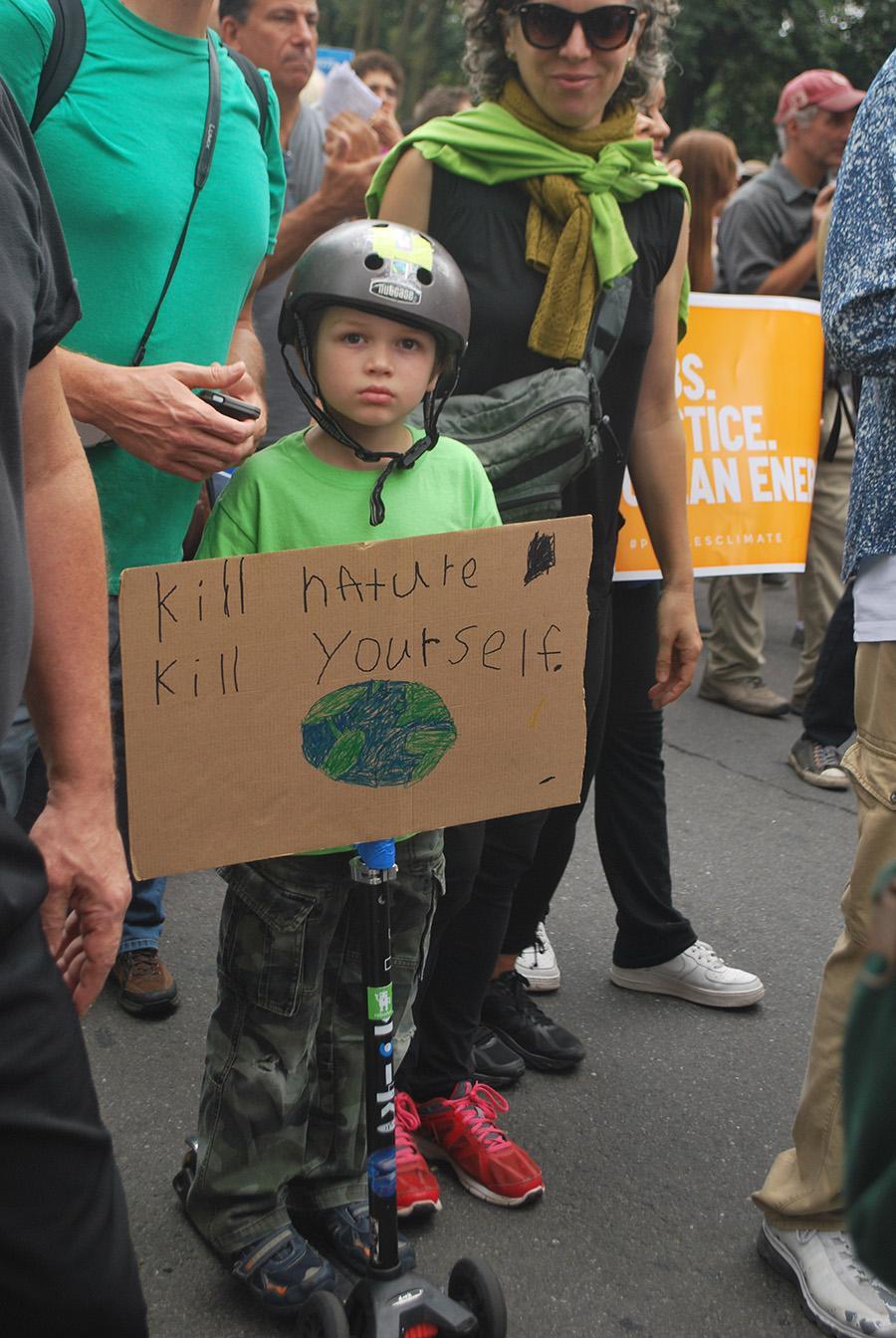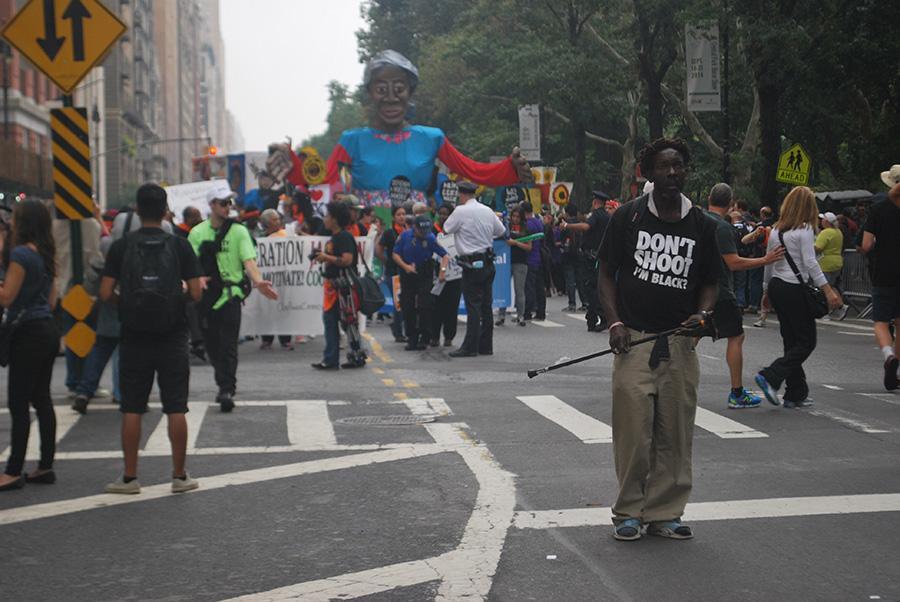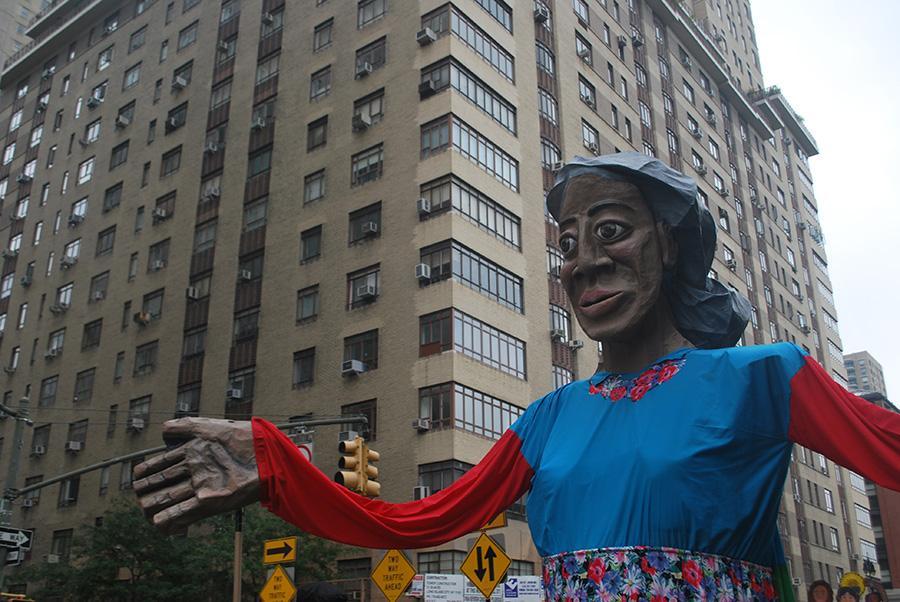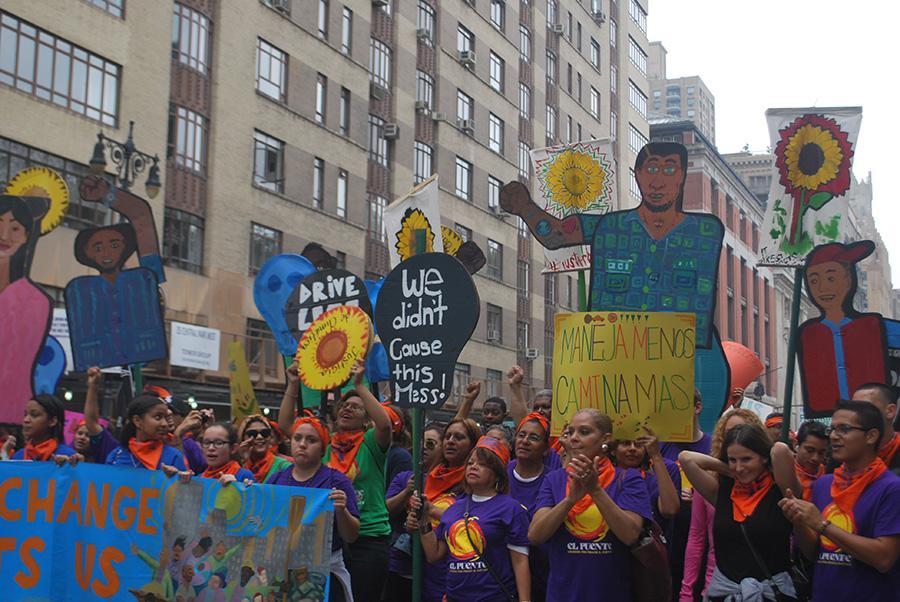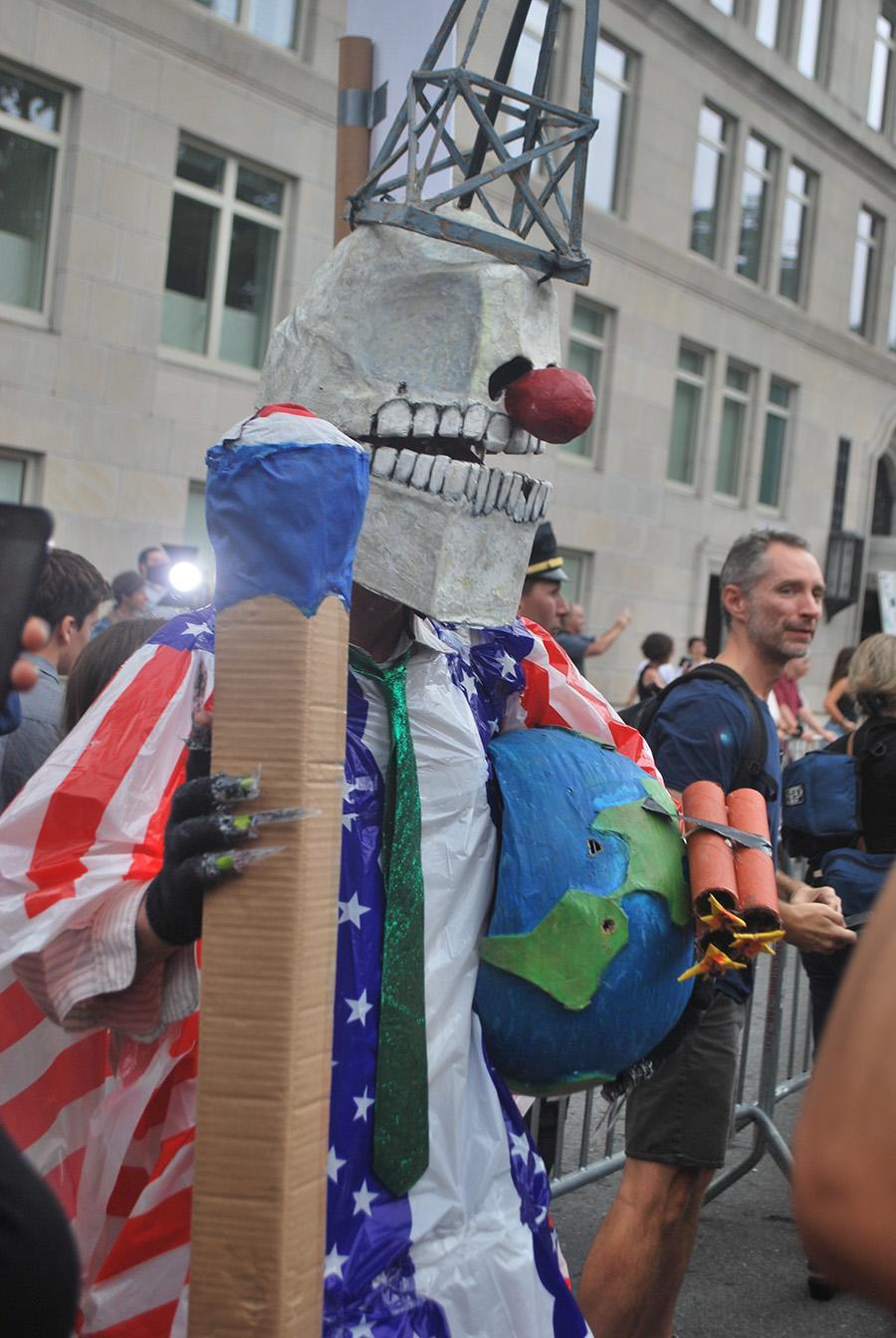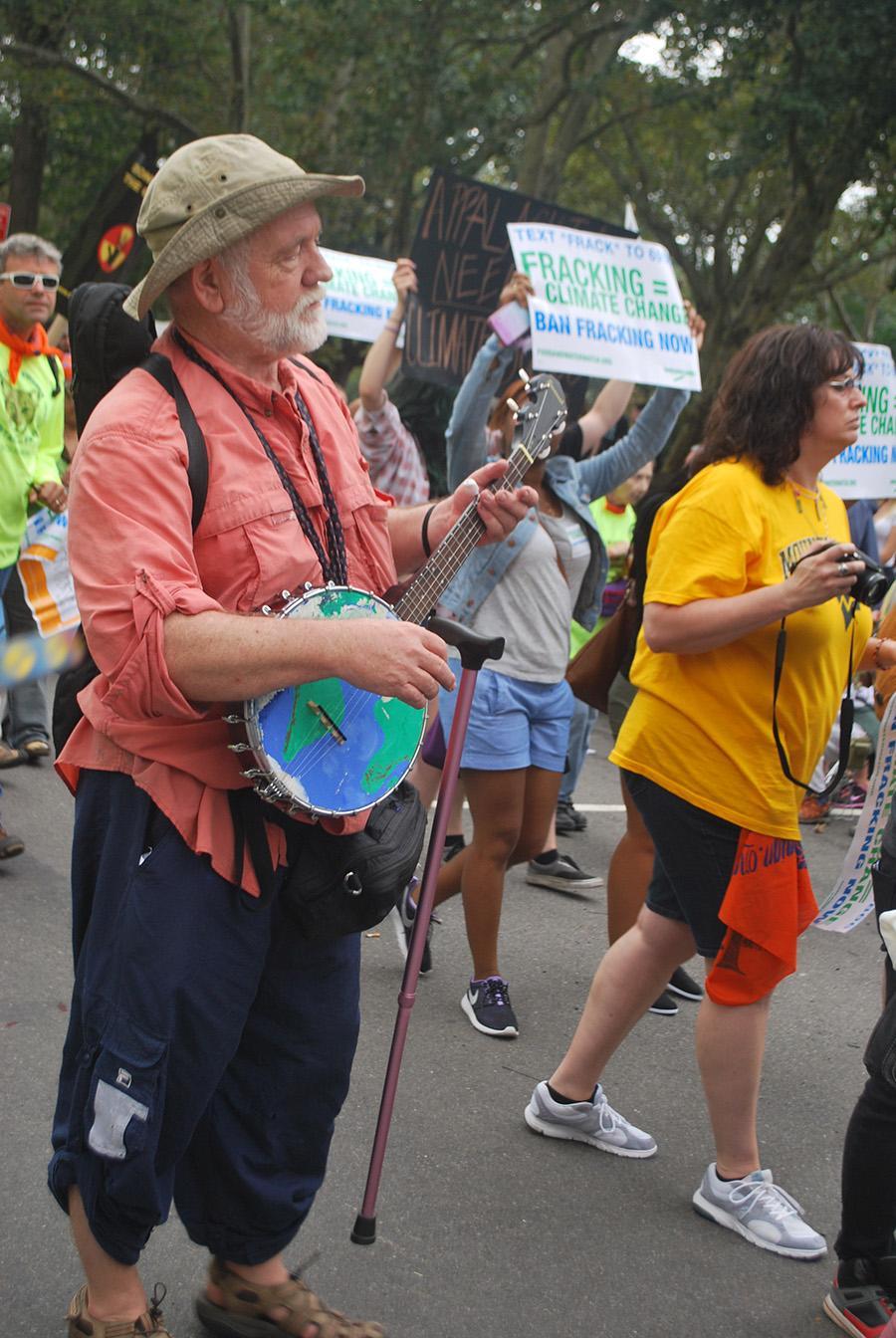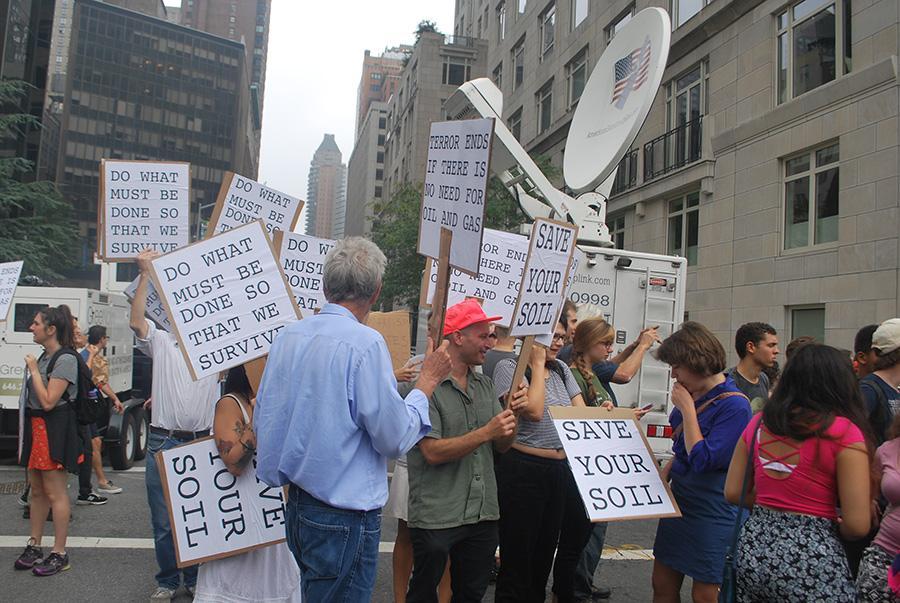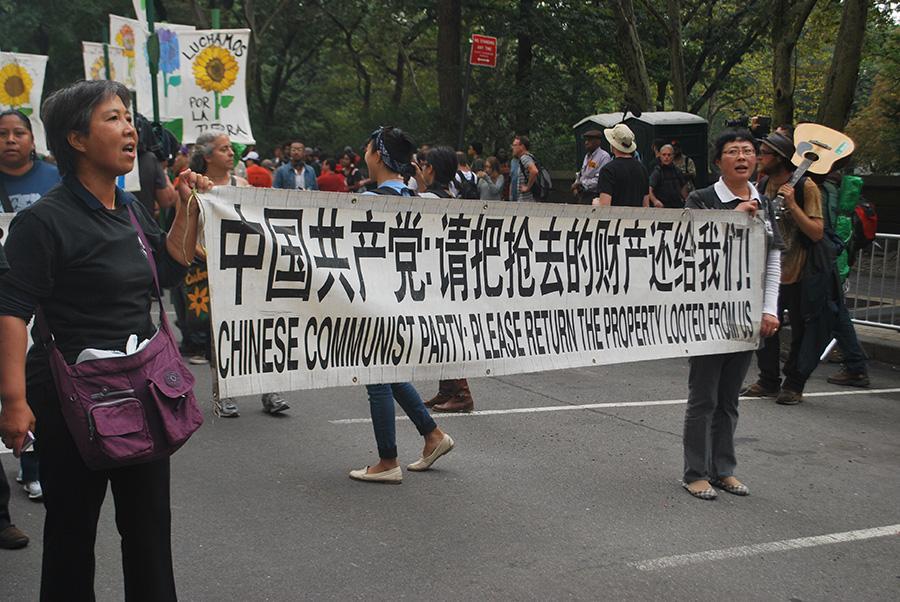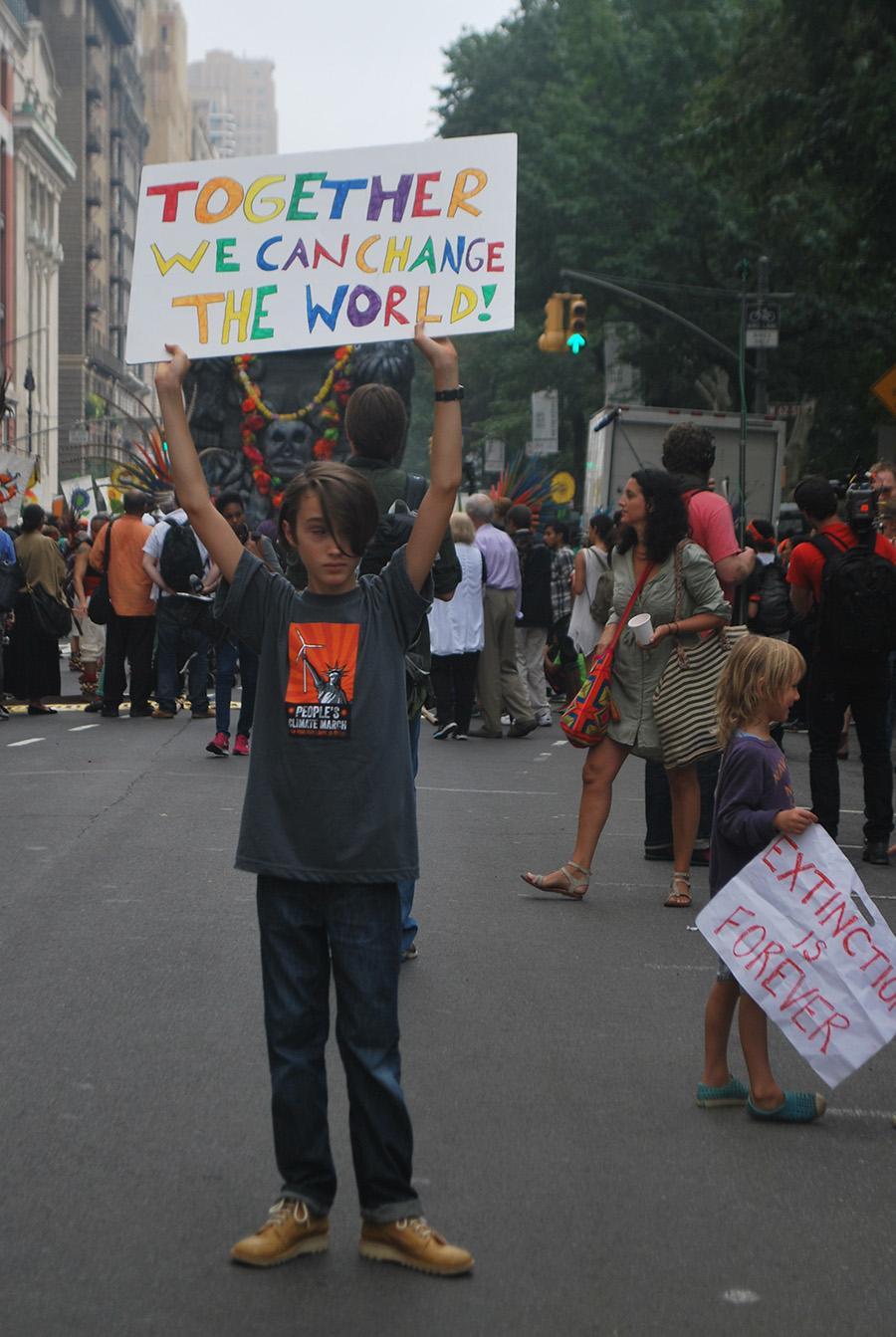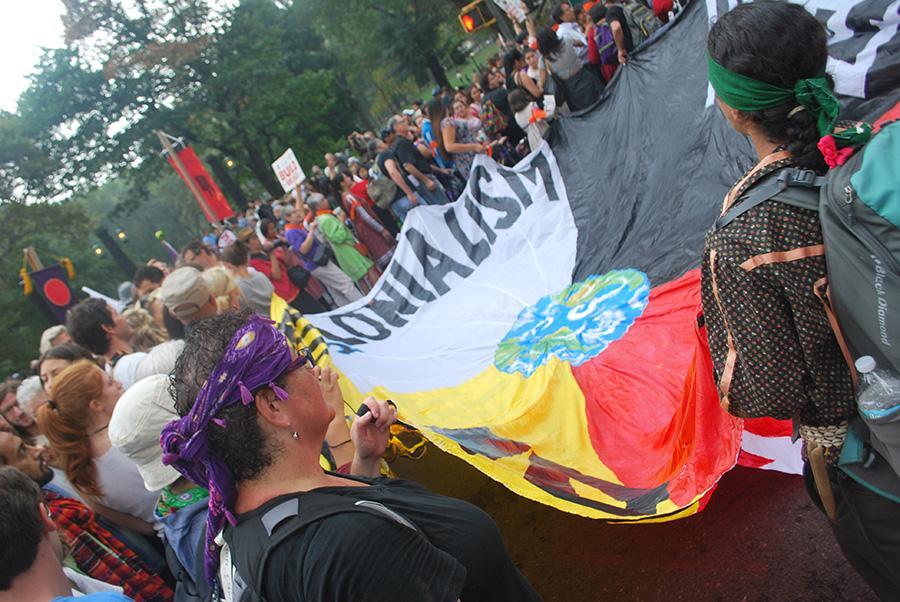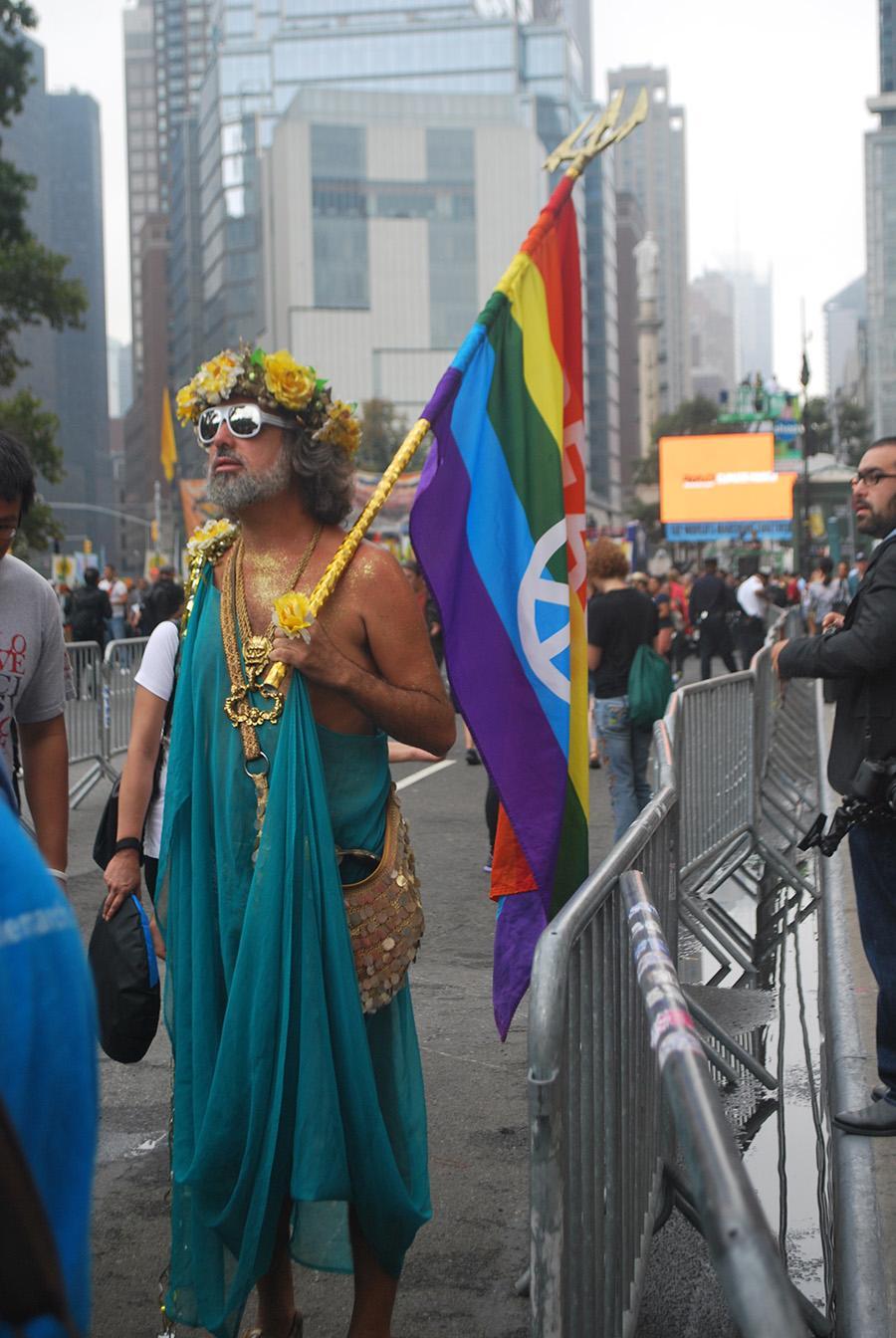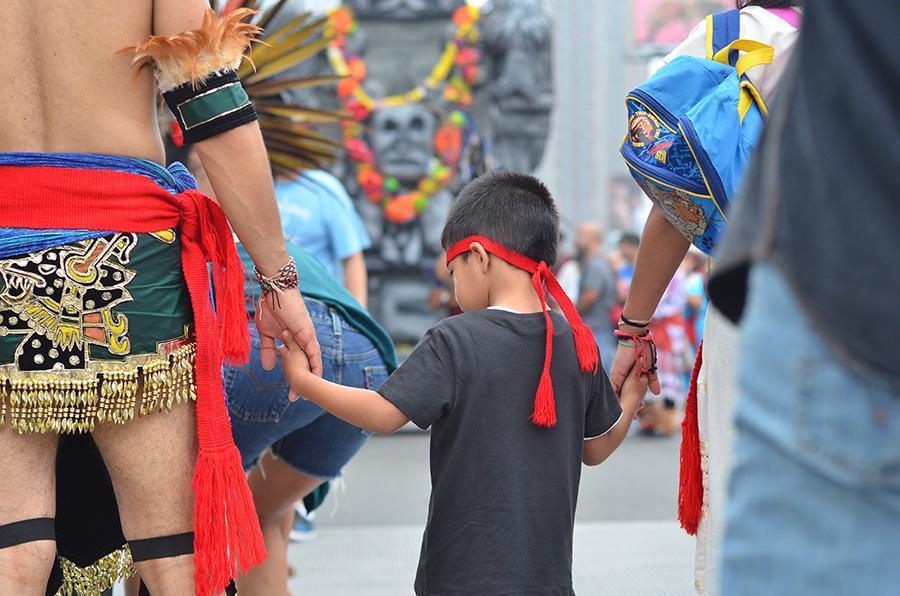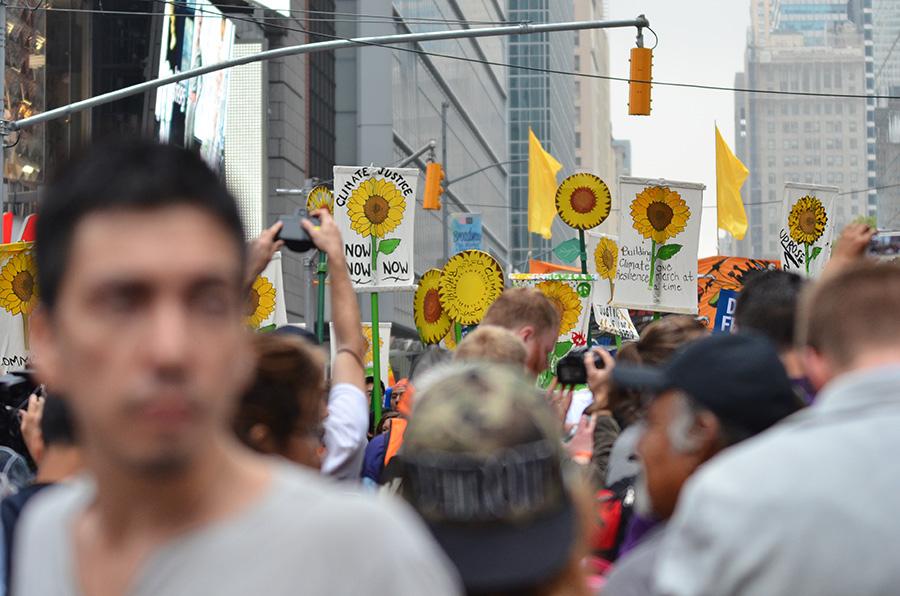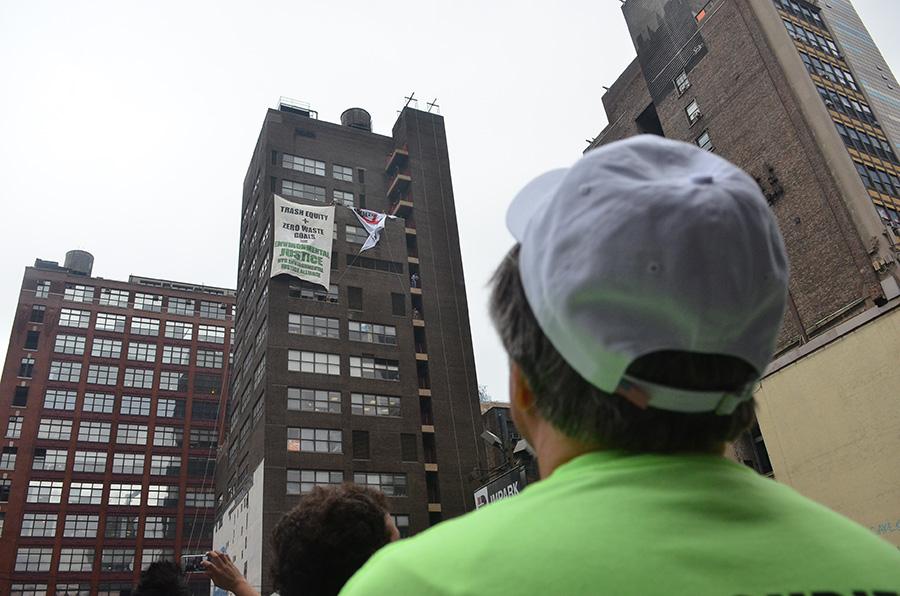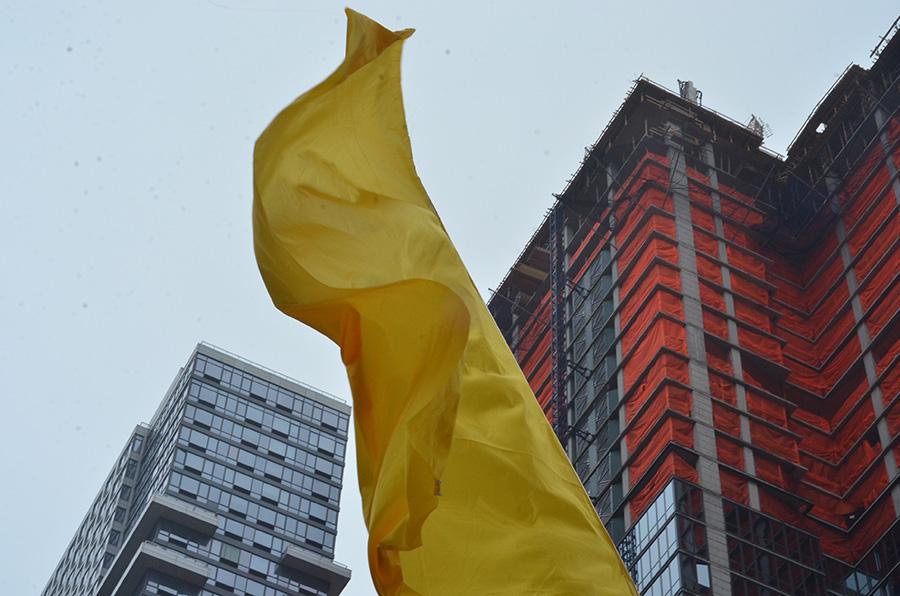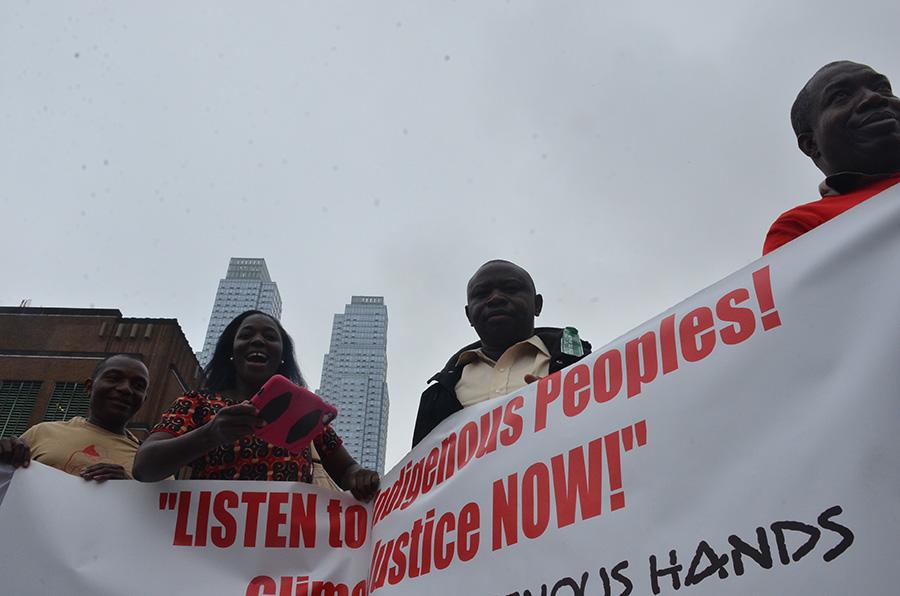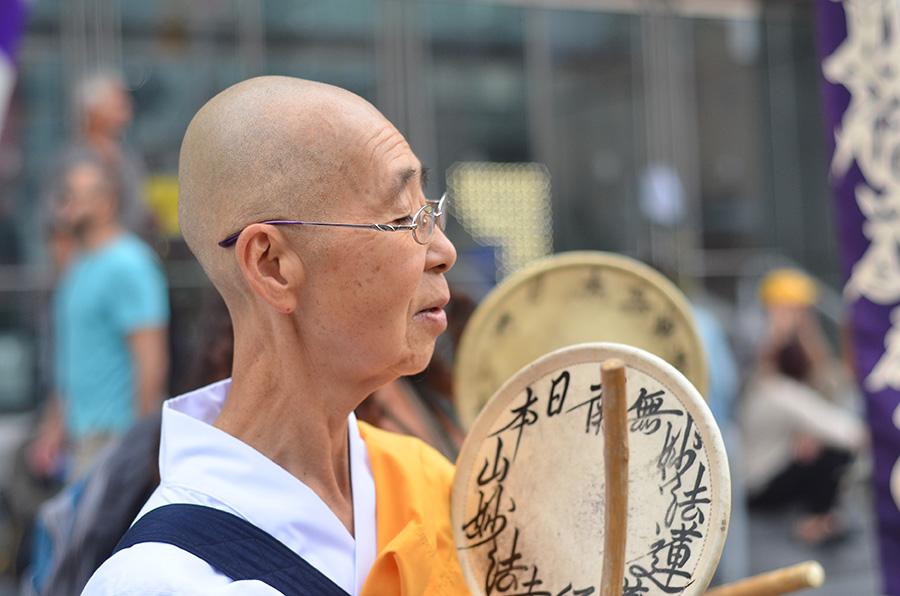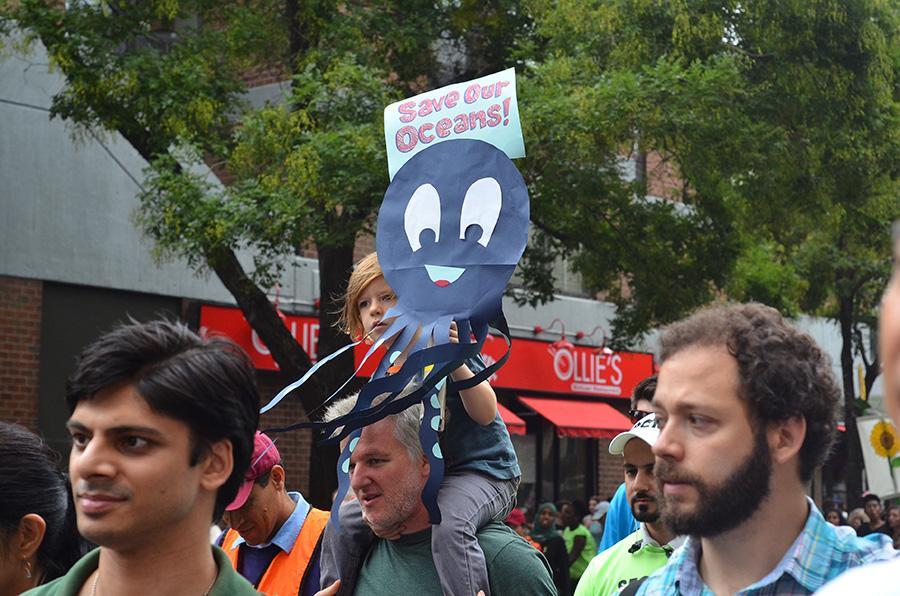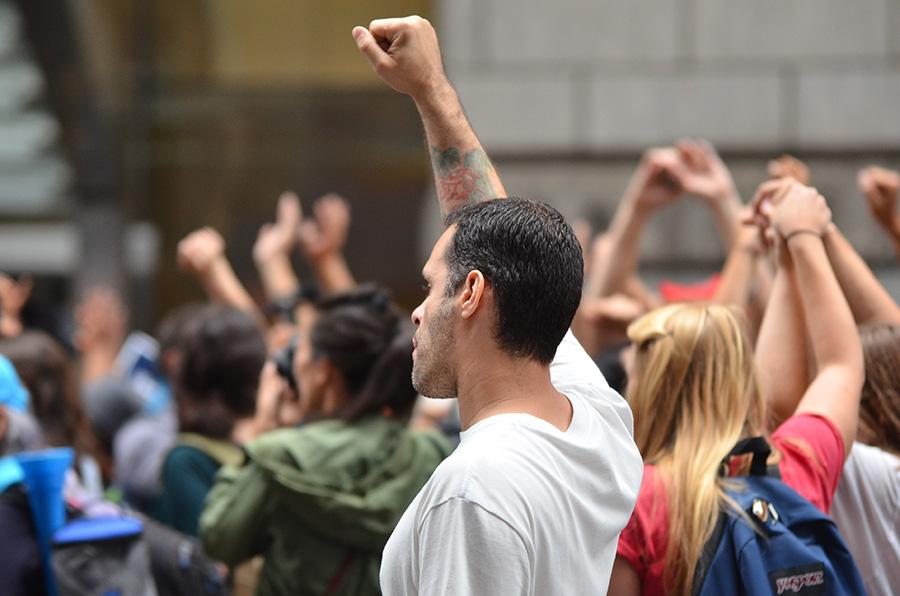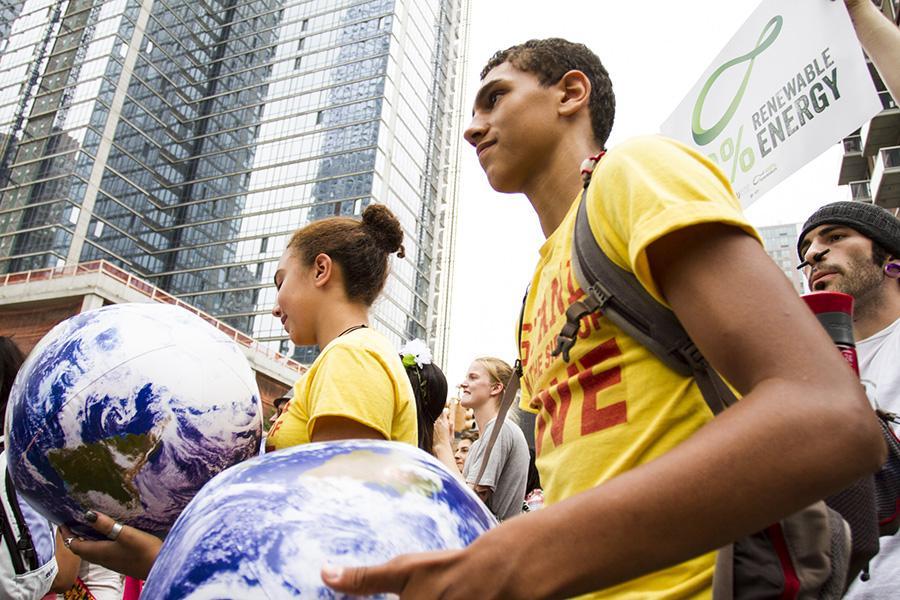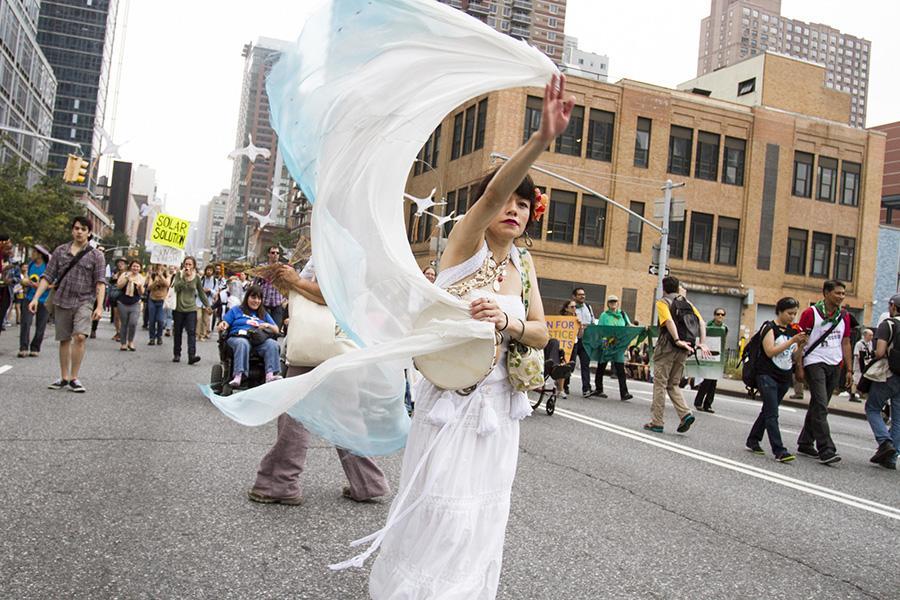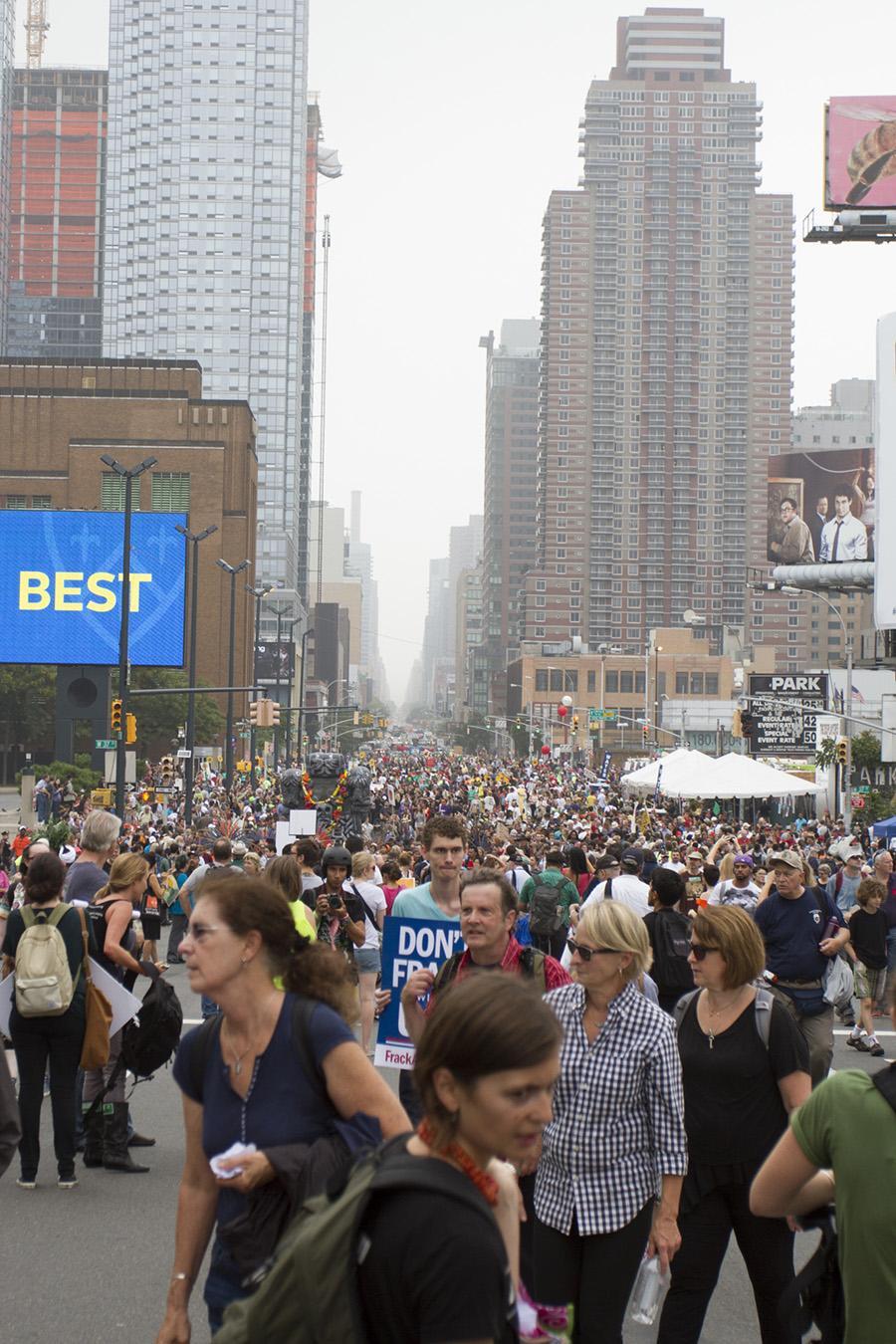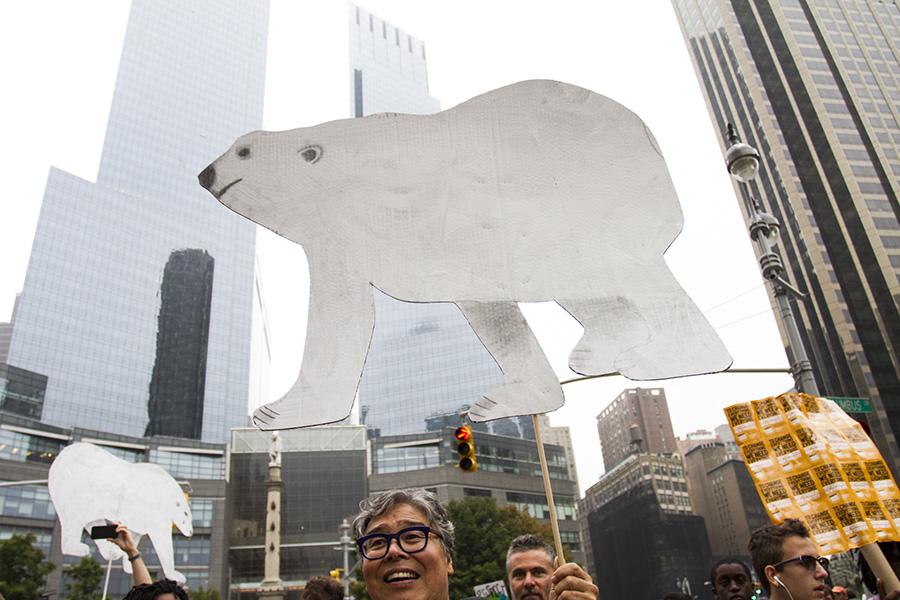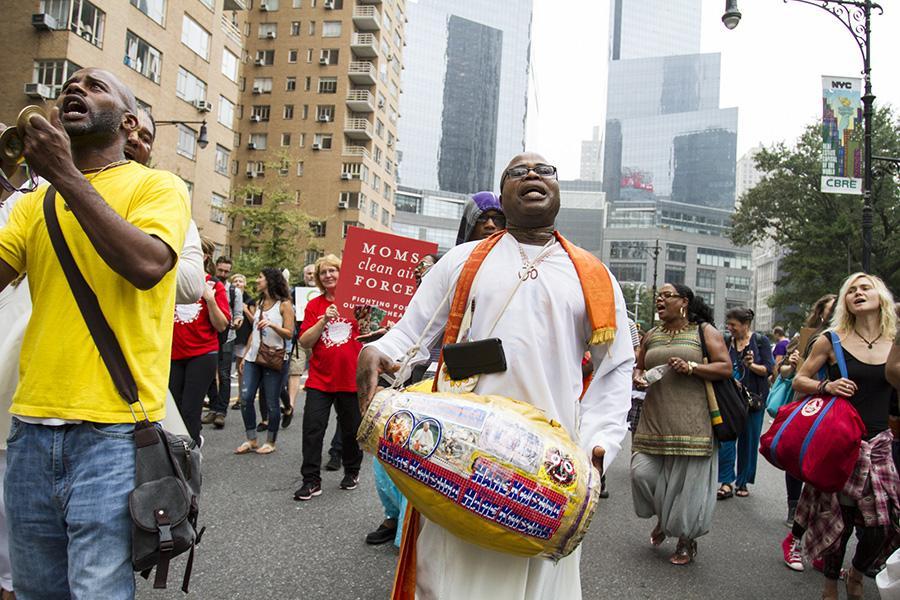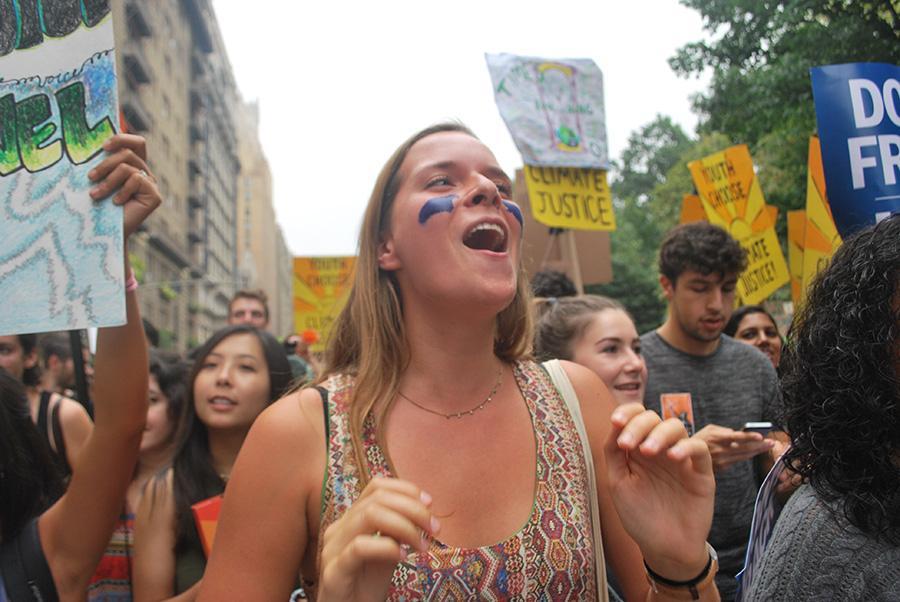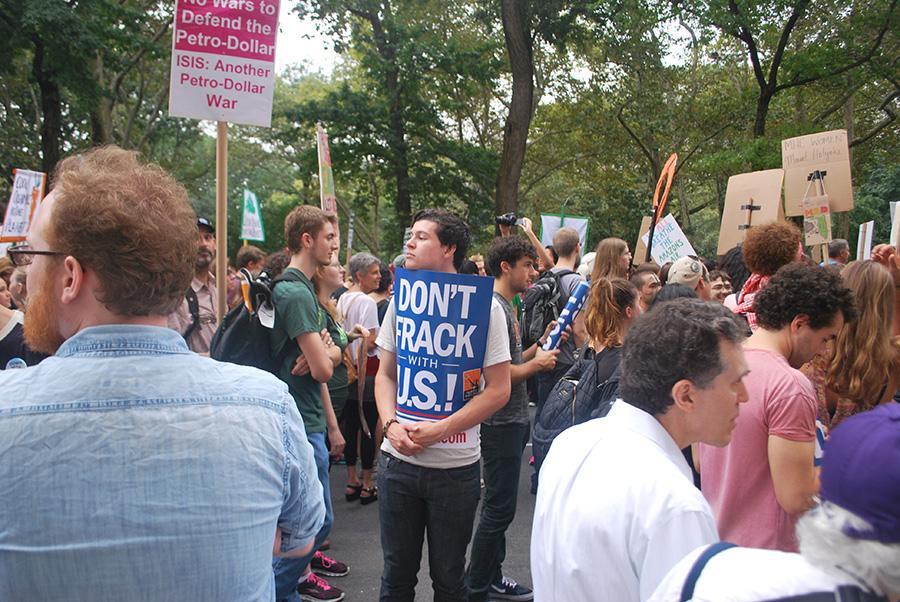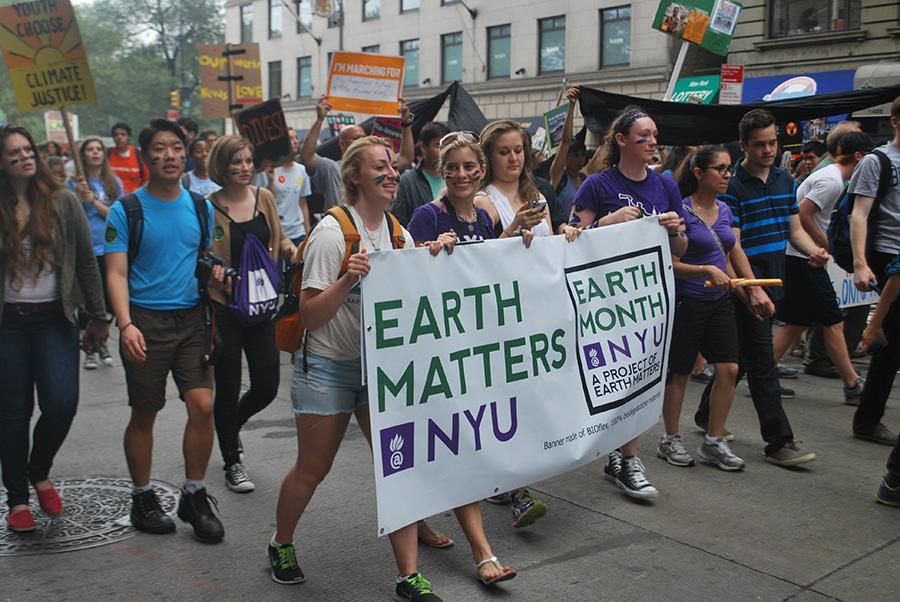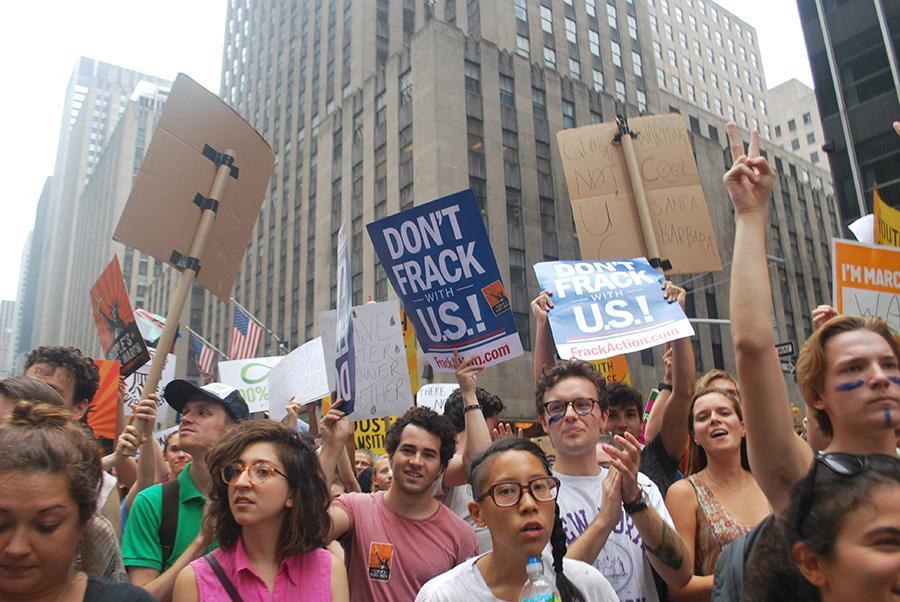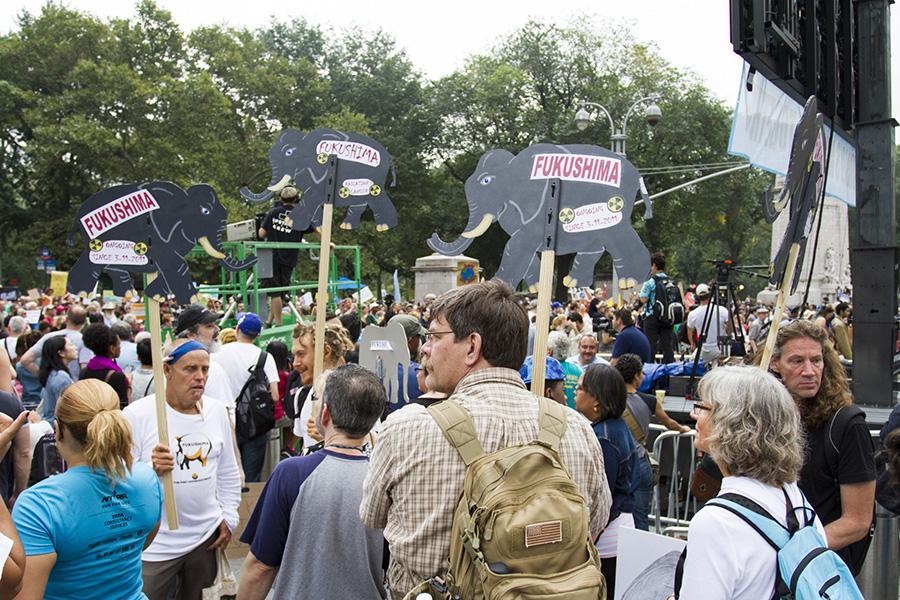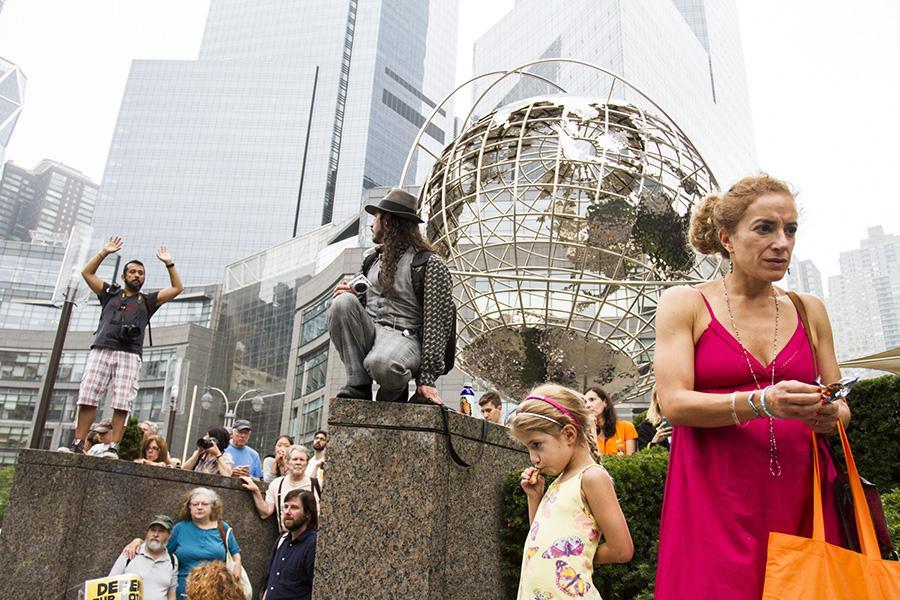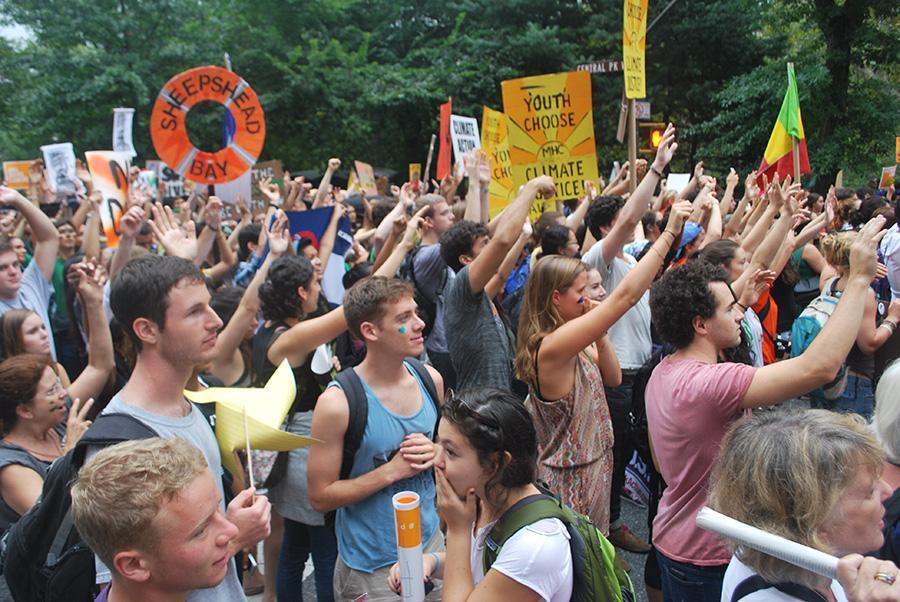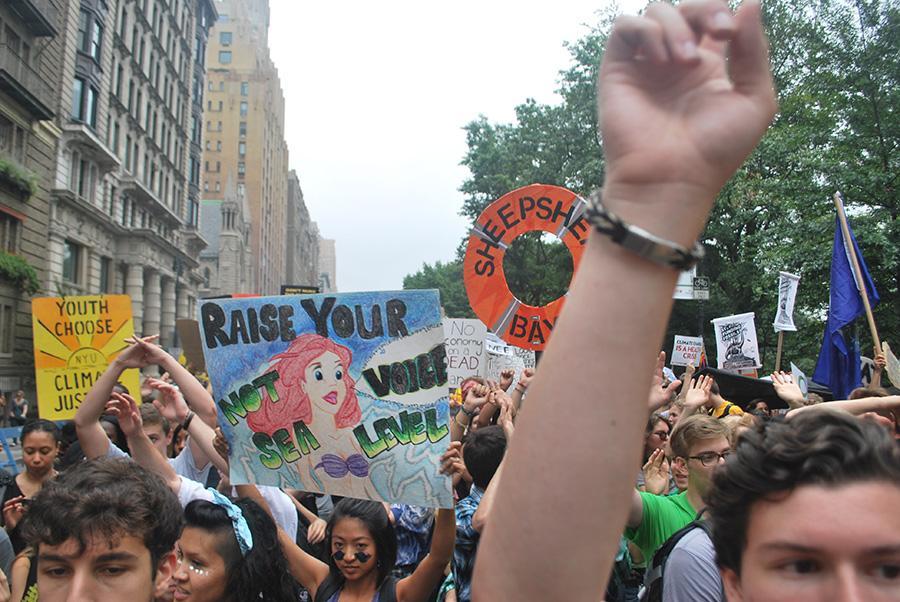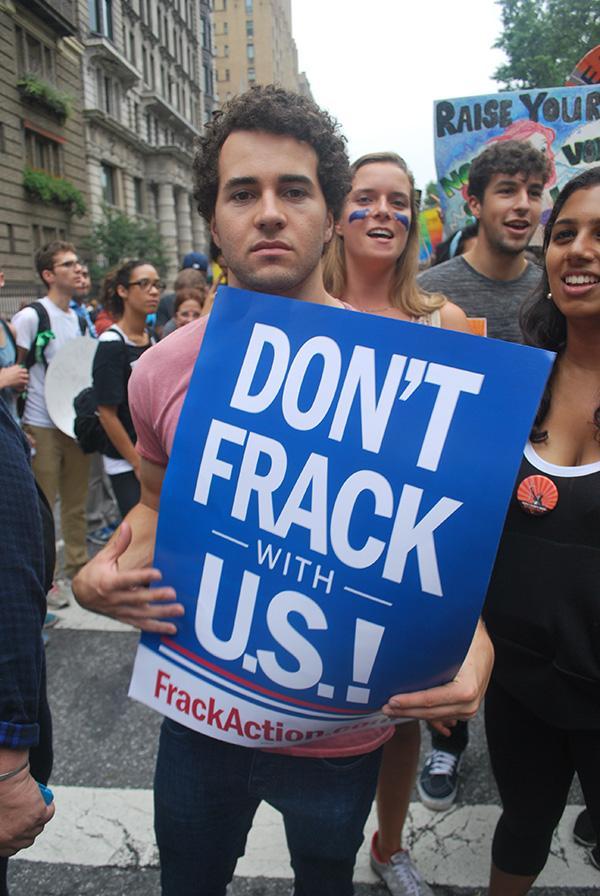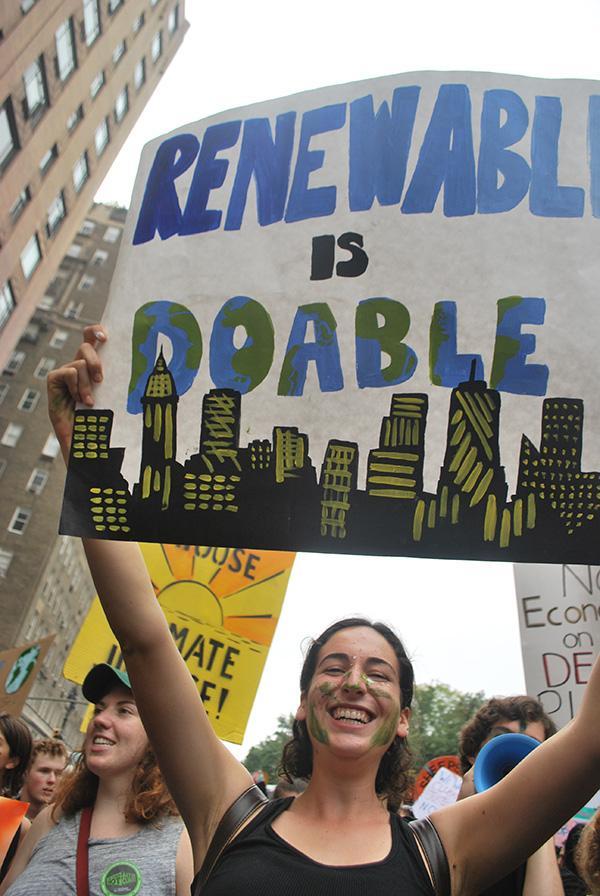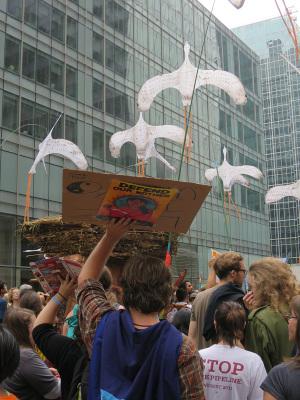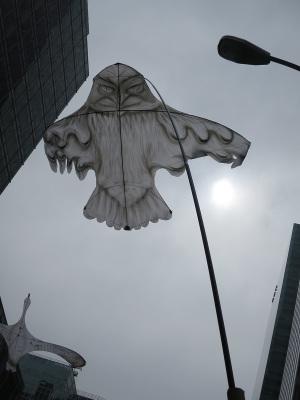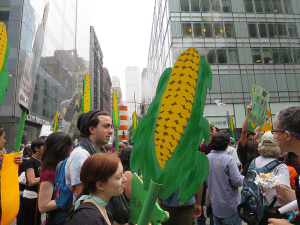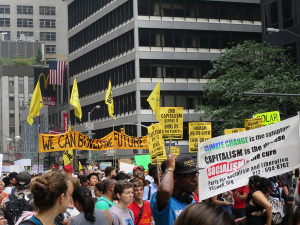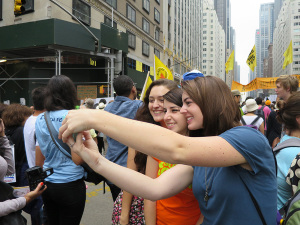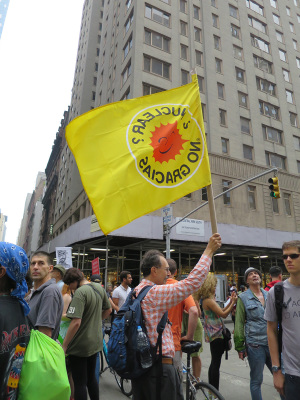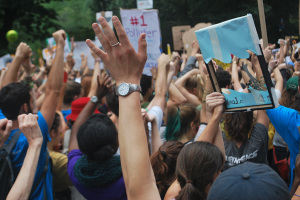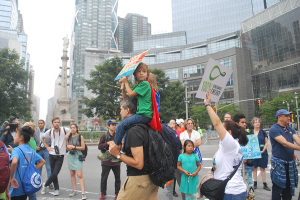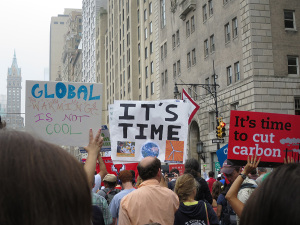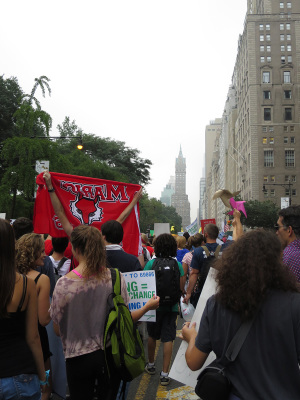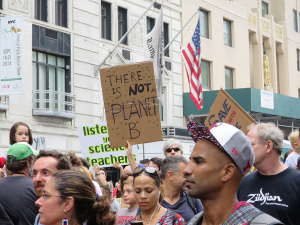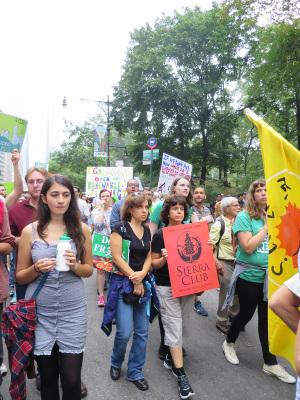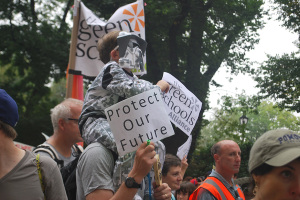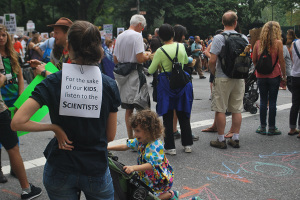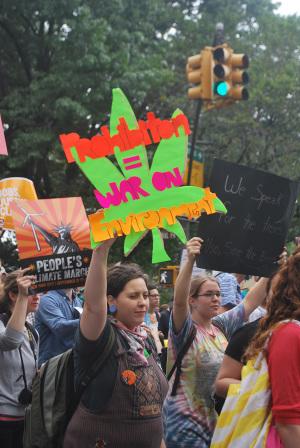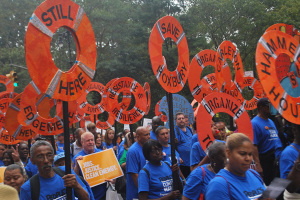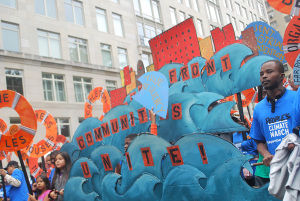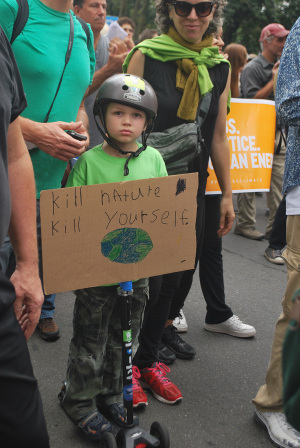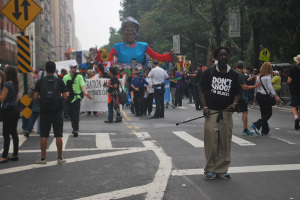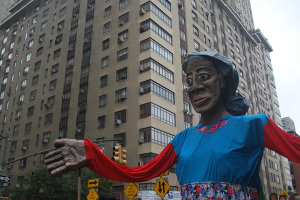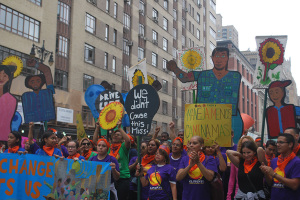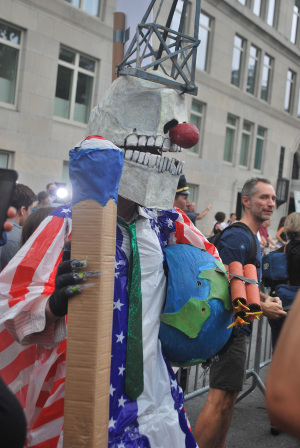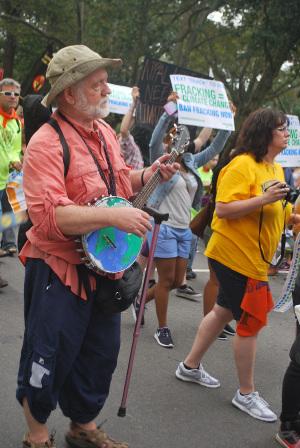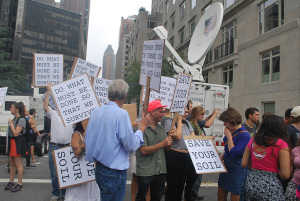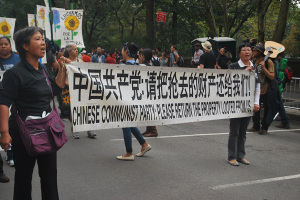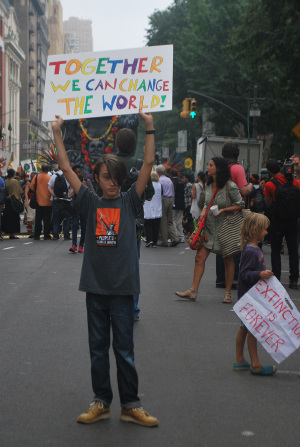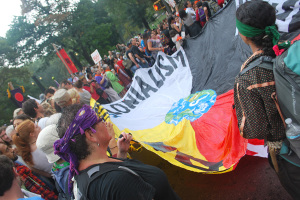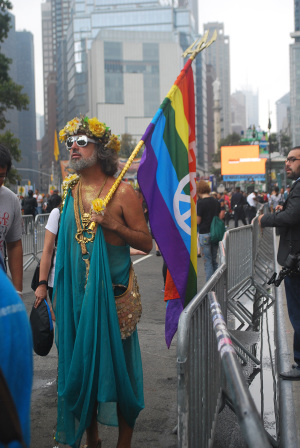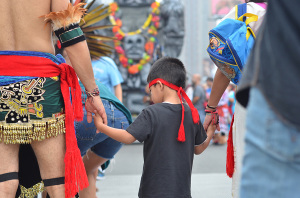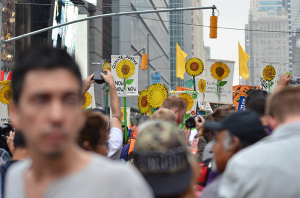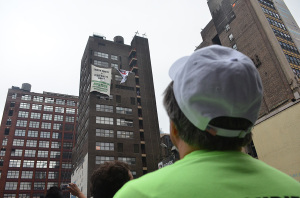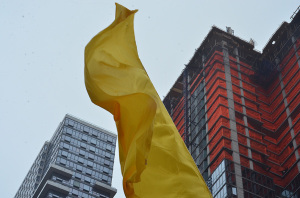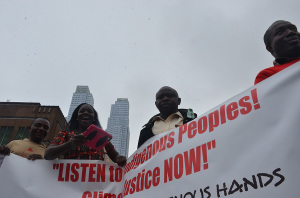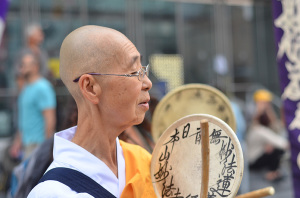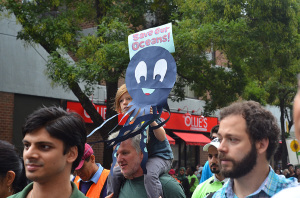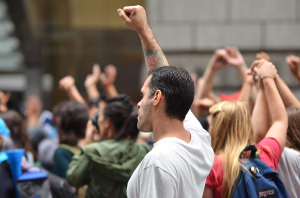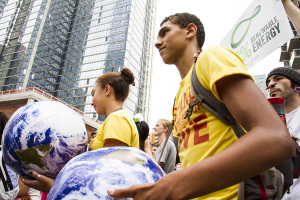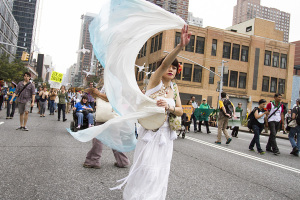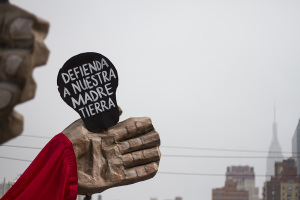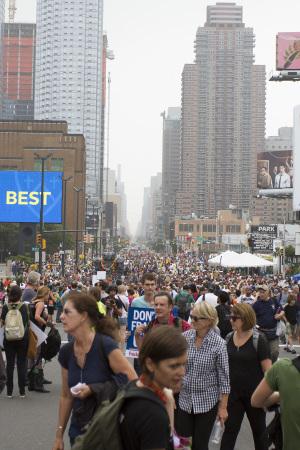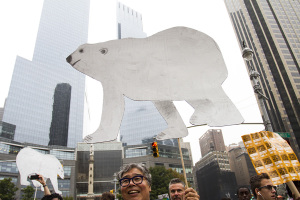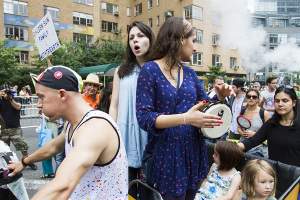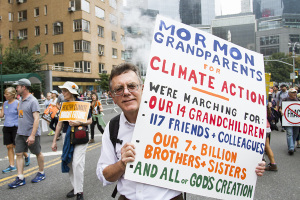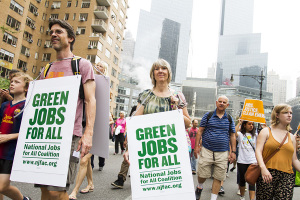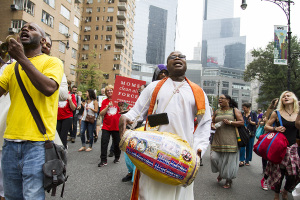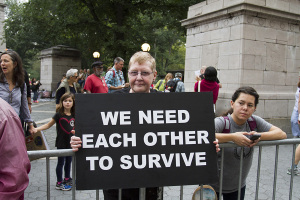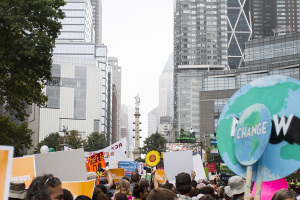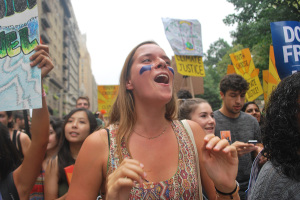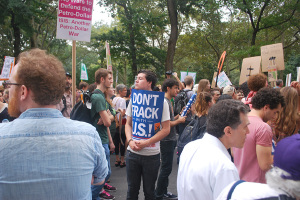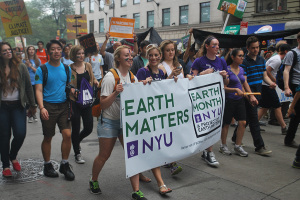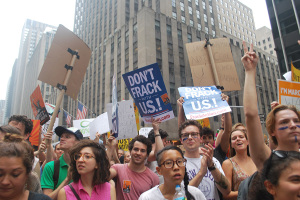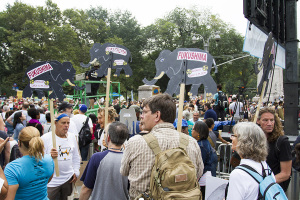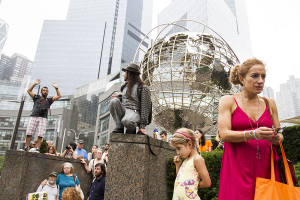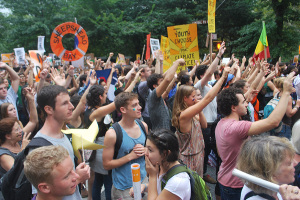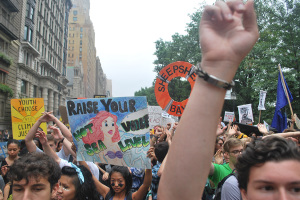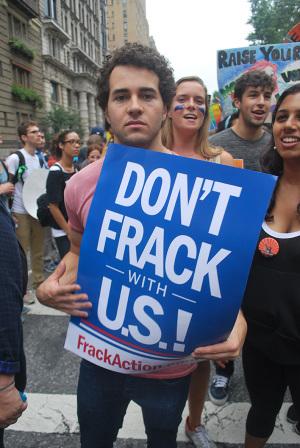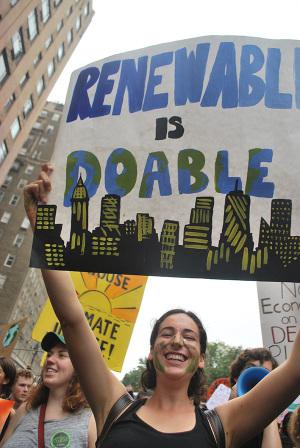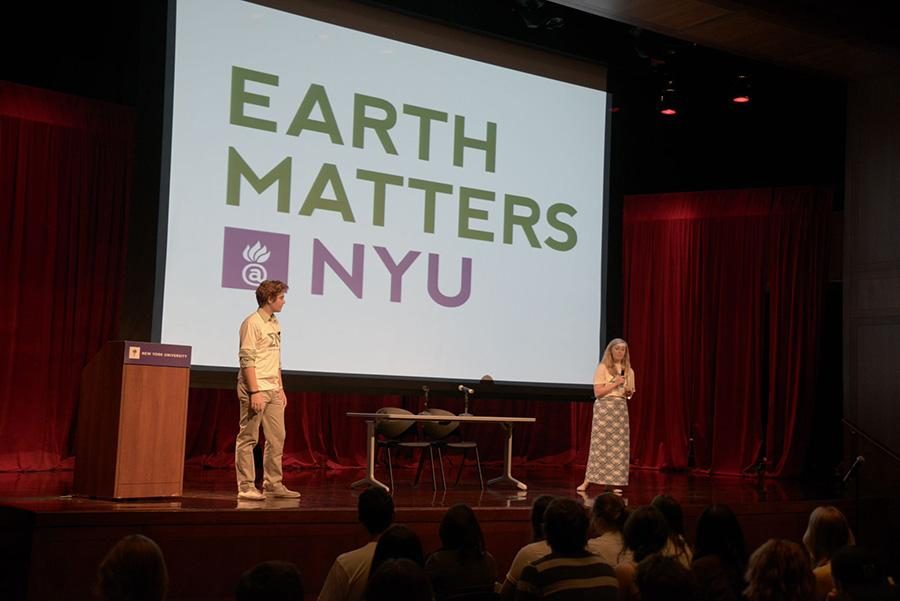People’s Climate March draws 400,000 people before UN Climate Summit
September 22, 2014
Approximately 400,000 people gathered on Central Park West between 65th and 86th streets on Sunday, Sept. 21, for the biggest climate-change march in history.
The People’s Climate March was organized to spread awareness for global warming and to encourage U.N. officials to take action against climate change during the Climate Summit on Sept. 23.
The summit is the first time in five years that world leaders have gathered to discuss climate change. While not part of a formal U.N. negotiation process, it serves as an opportunity for world leaders to pitch ideas and make announcements regarding climate change. A formal negotiation session will take place in Paris at the end of 2015.
For over two hours, participants in the march walked almost three miles chanting, singing and waving colorful signs and banners.
Upon reaching the end location on 11th Avenue between 34th and 38th streets, marchers continued to rally with call-and-response chants.
The march also included a moment of silence in remembrance of those who have already suffered at the hands of climate change.
Marchers hope that their actions on Sunday will put pressure on world leaders to take progressive action.
“It makes me happy to see this big turn-out,” environmental activist Lisa Beckerman said. “Hopefully it is enough to grab [the United Nations’] attention. I understand that change takes time, especially with all of the other pressing issues taking place in the world right now, but that time is now.”
The march was centered in New York, but thousands of people all over the world gathered in solidarity, resulting in demonstrations in cities such as London, Paris, Berlin and Rio de Janeiro. Ultimately, there were over 2,800 events in 166 countries.
CAS freshman Noelle Haven Kruse attended the march and said it was crucial in making a difference.
“Individual organizations don’t send the same kind of message as bringing together every culture, every country, every religion all at once with a common goal,” Haven Kruse said. “It’s such a divided issue, but we have to come together because this is where we all live.”
Justin Wood, the environmental justice community organizer for New York Lawyers for Public Interest, maintains it is still key for those who want to make a difference to look at the issue on a local level.
“It’s really important for people in New York or wherever they live to link up with groups or campaigns that relate to this in a local way in their communities so that we have sustained advocacy and change coming out of this,” Wood said.
The marchers supported a range of environmental causes and advocated for the protection of the Earth’s natural resources. Some marched for their grandchildren and future generations to live in a better world. One sign raised in the crowd read “I’m marching for my grandson Nathan,” and another read “Won’t somebody please think of the children?”
Sue Peterson, an environmental activist from Massachusetts, held her granddaughter’s hand in one hand and a picket sign that read “Wake up” in the other.
“Right now we are driving the planet over the edge, and something needs to be done about it,” Peterson said. “We are not only destroying the only world we have, but are also destroying it for every other generation after us. I am thinking of my grandchildren when marching. It is them I am worried about.”
Rod Lincoln, an activist from Pennsylvania, echoed Sue’s sentiments.
“It is our generation that has created this problem for our children, grandchildren and all subsequent generations,” Lincoln said. “Therefore it is now our job to bring awareness to the young kids, and hopefully push them to solve the problem they have been handed.”
A version of this article appeared in the Monday, Sept. 22 print edition. Email Alex Bazeley, Andrew Mei and Romie Williams at [email protected].
Students unite in pre-march
Over 200 NYU students gathered under the arch in Washington Square Park on Sunday, Sept. 21, to join in the largest environmental march to date, the People’s Climate March.
Before joining the greater march, the students held a rally with representatives from NYU Divest, Earth Matters @ NYU, Oxfam, Community Supported Agriculture, the Black Student Union, the Incarceration Coalition and Students for Sensible Drug Policy.
CAS senior and NYU Divest member Priya Mulgaonkar said the purpose of the rally was to encourage NYU students to be involved in the march and in environmental activism in general.
“It’s a half hour of power,” Mulgaonkar said. “My hope is that once all this energy from the march is over, people are going to crave it. There’s a huge community of people at NYU who care about this, and I think that is where the change is going to happen.”
Gallatin freshman Patrick Bova said attending the gathering made him feel like he was involved in a historic moment.
“I really wanted to participate because I think this is something really monumental and it would be really great to experience that first-hand rather than just sitting on the sidelines twiddling my thumbs,” Boza said.
Tisch sophomore Evie Cullingworth said the rally fostered a sense of campus community.
“This is one of these times where it’s like, ‘this is why I go to NYU,’” Cullingworth said. “This shows that NYU does have a sense of community, that we can all come together to support great things like this. I came here today alone but I feel welcomed.”
A version of this article appeared in the Monday, Sept. 22 print edition. Email Kirsten Rischert-Garcia at [email protected].
Environmental reps speak at NYU rally
NYU students and faculty met at the Eisner & Lubin Auditorium for the This is Why We March Rally on Thursday, Sept. 19. Members of Earth Matters @ NYU and NYU Divest partnered to spread awareness about climate change and encourage people to unite.
The event, held in anticipation of the People’s Climate March on Sept. 21, featured author Bill McKibben and People’s Climate March representative Dan Sherrell. Other speakers included Global Climate Change ambassadors Isso Nihmei, Lorena del Carpio Suarez and Goksen Sahin, who gave a presentation on how climate change affects the people of their respective homelands.
Sherrell said the march was just the start of the movement to end climate change.
“This [People’s Climate Change] march is not the solution, it is not the end,” Sherrell said. “Rather, it is the beginning of mobilization and progression.”
McKibben emphasized the importance of the march, saying people must unite to address climate change.
“This is a systemic structural problem,” McKibben said. “We must come together to change the power balance and do something about it. If we can do that, then we all have a chance.”
Del Carpio Suarez said the march was an opportunity to foster grassroots change.
“We have the power to change our lifestyle and decisions,” del Carpio Suarez said. “It should not only be left to the hands of politicians.”
CAS junior and vice president of Earth Matters Davis Saltonstall said the goal of the march was to encourage world leaders to take action.
“This march is a landmark in history,” Saltonstall said.
CAS sophomore Catherine Dammer-Jones said the support for the march represented a popular desire for change.
“Everyone is becoming aware of these [environmental] issues, in a way that we have not seen in a long time,” Dammer-Jones said. “There’s definitely a unifying factor, and the passion that people have for this cause is remarkable.”
CAS sophomore Rebecca Weiser said she came to the This is Why We March Rally to learn more about climate change.
“We have to do something for our environment because it is the sphere we live in,” Weiser said. “I hope for more sustainable policies to take place and for more actions to be put into effect to help the environment.”
A version of this article appeared in the Monday, Sept. 22 print edition. Email Romie Williams at [email protected].
People’s Climate March truly for the people
Around 400,000 people participated in the People’s Climate March yesterday, far surpassing the expected turnout of 100,000. The march, scheduled two days before a U.N. summit on climate change, aimed to bring attention to the economic and personal consequences of continued inaction to prevent further climate changes while creating political pressure. The marchers were joined by high-profile environmentalists and political figures such as U.N. Secretary General Ban Ki-moon, former Vice President Al Gore, researcher Jane Goodall, actor Leonardo DiCaprio and Mayor Bill de Blasio. The high turnout and inclusive lineup of over 1,500 partnering organizations resulted in an effective march with a clear purpose that garnered significant media attention. Further demonstrations will be needed as the climate debate continues, but the high level of organization for this march should be emulated in future events.
The march was organized into six themes in order to tell a story through the threads of today’s climate movement. The participating groups, representing themes such as We Have Solutions and We Know Who is Responsible, lined up along Central Park West before marching through Midtown West. The groups not only provided a narrative for the climate movement, but also offered a place for hundreds of organizations to join together. The use of themes allowed a wide range of groups to participate without being directly related to one another. For example, both scientific and religious groups had their own contingent, which allowed them to support a common goal despite differences in opinions.
The rally could be a critical step in the climate movement. Despite campaigns, marches and fundraising, 39.8 billion tons of carbon dioxide were released into the atmosphere last year, 2.3 percent higher than ever before. The main contributors were the United States, China and India, which all increased their emissions at a significantly faster rate than any other nation. Though the United States decreased its emissions over four out of the past five years, there was an increase in last year’s emissions. Given the large role the United States has played in carbon dioxide emissions and the size of the demonstrations today, the Obama administration has a particular responsibility to contribute to a solution at the U.N. summit.
In response to yesterday’s march, de Blasio said, “Summits sometimes spark great change — rallies, protests sometimes spark great change. Sometimes they don’t. My sense is that the energy you’re seeing on the streets, the numbers that have amassed here and in other cities around the world suggest something bigger is going on.” While the green campaign is unlikely to immediately achieve most of its goals, it will at least galvanize positive change. The message of the movement has been well-received by politicians and citizens alike, thanks to the scale of the demonstration and the unique organization of themed groups.
A version of this article appeared in the Monday, Sept. 22 print edition. Email the Editorial Board at [email protected].







